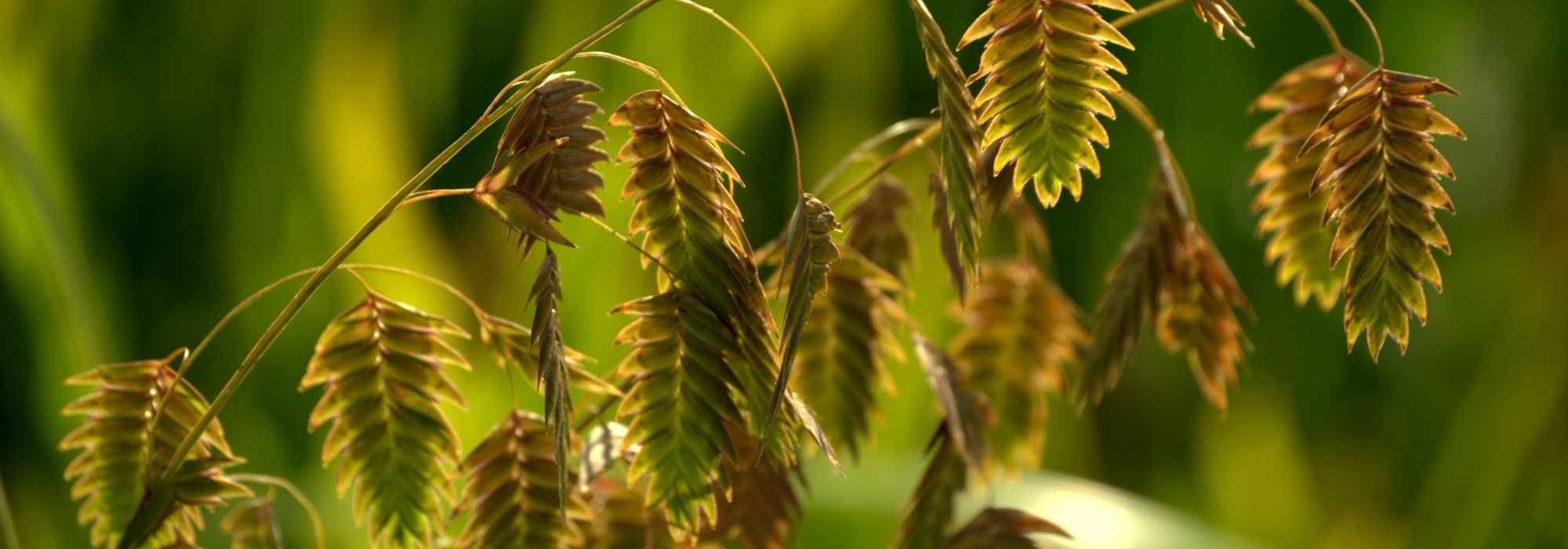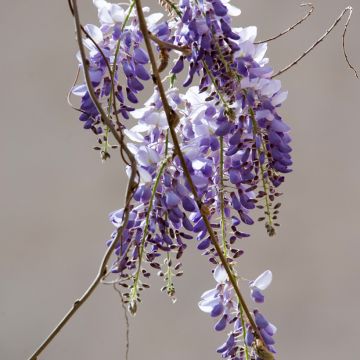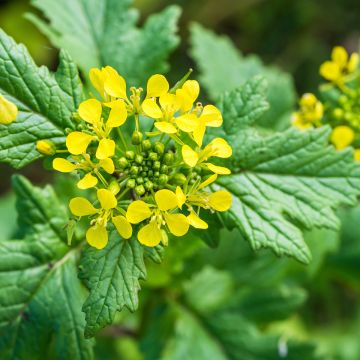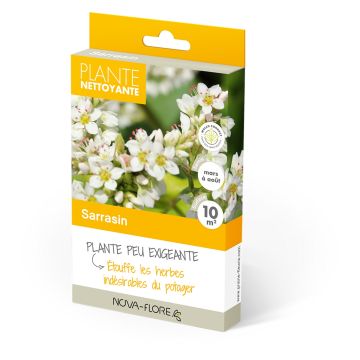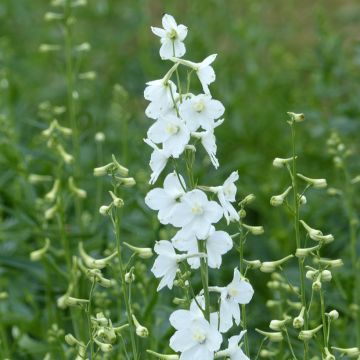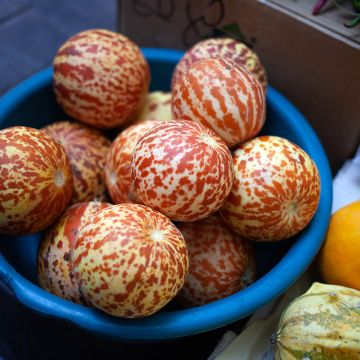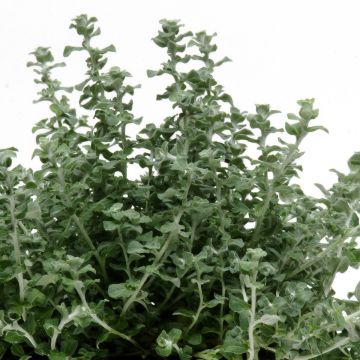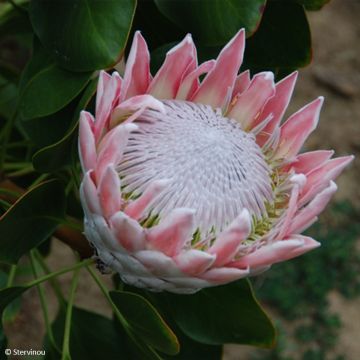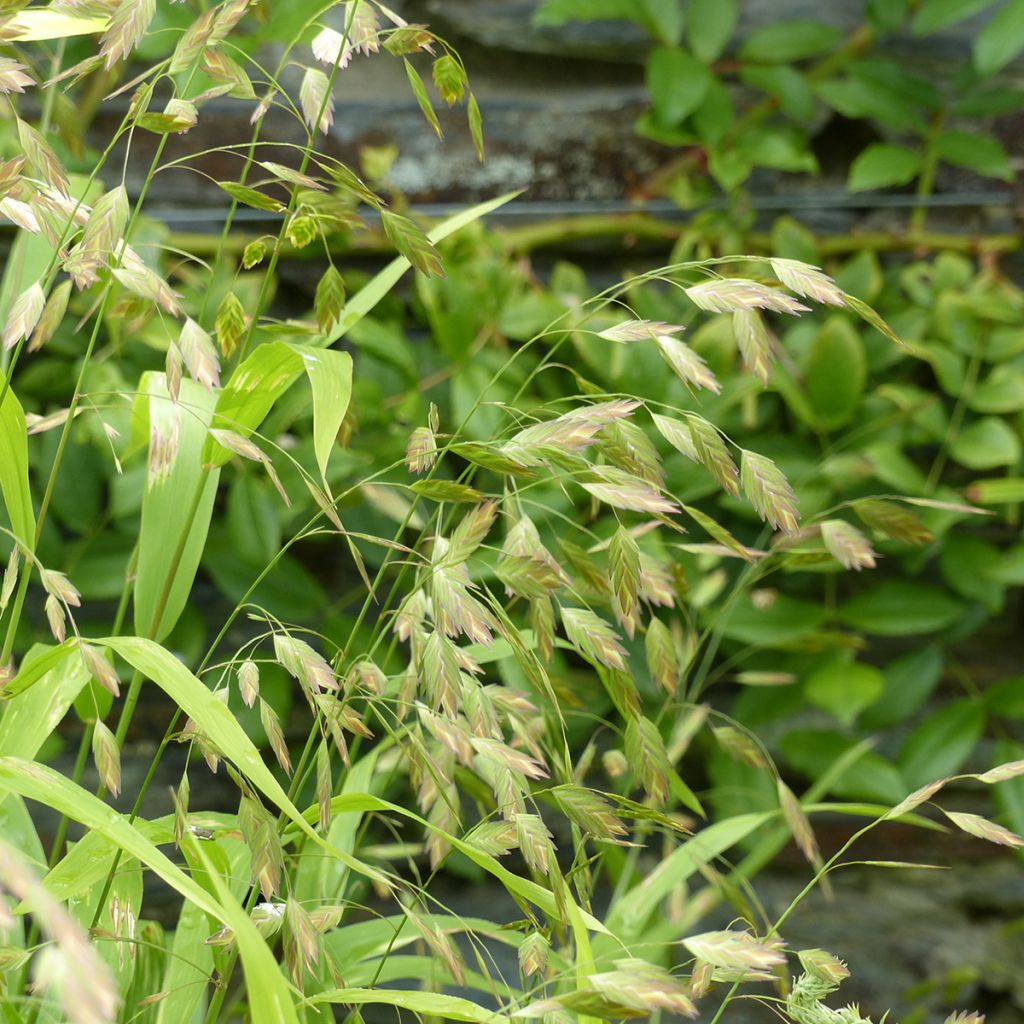

Chasmanthium latifolium seeds - Northern sea oats
Chasmanthium latifolium seeds - Northern sea oats
Chasmanthium latifolium
Wild oat, Wood oat
Special offer!
Receive a €20 voucher for any order over €90 (excluding delivery costs, credit notes, and plastic-free options)!
1- Add your favorite plants to your cart.
2- Once you have reached €90, confirm your order (you can even choose the delivery date!).
3- As soon as your order is shipped, you will receive an email containing your voucher code, valid for 3 months (90 days).
Your voucher is unique and can only be used once, for any order with a minimum value of €20, excluding delivery costs.
Can be combined with other current offers, non-divisible and non-refundable.
Home or relay delivery (depending on size and destination)
Schedule delivery date,
and select date in basket
This plant carries a 6 months recovery warranty
More information
We guarantee the quality of our plants for a full growing cycle, and will replace at our expense any plant that fails to recover under normal climatic and planting conditions.
Does this plant fit my garden?
Set up your Plantfit profile →
Description
Chasmanthium latifolium, also known as Northern Sea Oats or Wild Oats, is an elegant perennial grass prized for its flattened, pendulous spikes that move in the wind. With its soft, trailing habit, this plant forms broad clumps that bring movement and lightness to both partially shaded and sunny settings. It thrives in moist, well-drained soil and tolerates harsh winters down to -20 °C. In borders, light woodland, or pond edges, it stands out with foliage that shifts from soft green to a blazing golden hue in autumn, while its persistent inflorescences also make their way into dried bouquets. Easy to grow but sensitive to prolonged drought, it benefits from summer mulching and regular watering during intense heat.
Chasmanthium latifolium is a perennial grass from the Poaceae family. Formerly classified as Uniola latifolia, this species is native to wooded areas and riverbanks in the eastern United States and northeastern Mexico. It is particularly widespread in riverside forests and damp meadows, where it plays an important ecological role in stabilising soil and providing habitat for local wildlife. This plant has a clumping habit, forming dense tufts of upright stems typically reaching 60 to 120 cm in height in cultivation. Its growth is moderate, emerging in spring and flowering in summer. The foliage consists of lanceolate, 1 to 2 cm wide and 9 to 20 cm long, light green leaves, turning golden yellow in autumn. The stems, or culms, are slender, slightly arched, and green. The inflorescences are characteristic of the species; they are pendulous, 10 to 35 cm long panicles bearing flattened spikelets 2 to 4 cm long and 6 to 16 mm wide. These spikelets are initially green, taking on bronze or purple hues late in the season. Flowering extends from July to September, and is wind-pollinated. The fruits are ovoid caryopses, laterally compressed, 2 to 2.5 mm long, and eaten by birds and small mammals. The root system is spreading, with short rhizomes allowing moderate spread without becoming invasive. The decorative, dried inflorescences of Chasmanthium latifolium are often used in floral arrangements. This plant is also recommended for stabilising banks and preventing erosion in damp areas.
Chasmanthium latifolium integrates elegantly into naturalistic gardens, bringing soft height and delicate texture to garden scenes. Its pendulous spikes, resembling oats, catch the light and enliven borders at the slightest breeze. For visual harmony, pair it with ferns such as Athyrium filix-femina, whose fine foliage contrasts with the inflorescences of the Chasmanthium. The airy blooms of Gauras add an ethereal touch, while the purple tones of Echinacea purpurea 'Magnus' offer a lovely contrast.
Flowering
Foliage
Plant habit
Botanical data
Chasmanthium
latifolium
Poaceae
Wild oat, Wood oat
Uniola latifolia
North America
Planting and care
Sowing period
Intended location
Planting & care advice
This item has not been reviewed yet - be the first to leave a review about it.
Similar products
Haven't found what you were looking for?
Hardiness is the lowest winter temperature a plant can endure without suffering serious damage or even dying. However, hardiness is affected by location (a sheltered area, such as a patio), protection (winter cover) and soil type (hardiness is improved by well-drained soil).

Photo Sharing Terms & Conditions
In order to encourage gardeners to interact and share their experiences, Promesse de fleurs offers various media enabling content to be uploaded onto its Site - in particular via the ‘Photo sharing’ module.
The User agrees to refrain from:
- Posting any content that is illegal, prejudicial, insulting, racist, inciteful to hatred, revisionist, contrary to public decency, that infringes on privacy or on the privacy rights of third parties, in particular the publicity rights of persons and goods, intellectual property rights, or the right to privacy.
- Submitting content on behalf of a third party;
- Impersonate the identity of a third party and/or publish any personal information about a third party;
In general, the User undertakes to refrain from any unethical behaviour.
All Content (in particular text, comments, files, images, photos, videos, creative works, etc.), which may be subject to property or intellectual property rights, image or other private rights, shall remain the property of the User, subject to the limited rights granted by the terms of the licence granted by Promesse de fleurs as stated below. Users are at liberty to publish or not to publish such Content on the Site, notably via the ‘Photo Sharing’ facility, and accept that this Content shall be made public and freely accessible, notably on the Internet.
Users further acknowledge, undertake to have ,and guarantee that they hold all necessary rights and permissions to publish such material on the Site, in particular with regard to the legislation in force pertaining to any privacy, property, intellectual property, image, or contractual rights, or rights of any other nature. By publishing such Content on the Site, Users acknowledge accepting full liability as publishers of the Content within the meaning of the law, and grant Promesse de fleurs, free of charge, an inclusive, worldwide licence for the said Content for the entire duration of its publication, including all reproduction, representation, up/downloading, displaying, performing, transmission, and storage rights.
Users also grant permission for their name to be linked to the Content and accept that this link may not always be made available.
By engaging in posting material, Users consent to their Content becoming automatically accessible on the Internet, in particular on other sites and/or blogs and/or web pages of the Promesse de fleurs site, including in particular social pages and the Promesse de fleurs catalogue.
Users may secure the removal of entrusted content free of charge by issuing a simple request via our contact form.
The flowering period indicated on our website applies to countries and regions located in USDA zone 8 (France, the United Kingdom, Ireland, the Netherlands, etc.)
It will vary according to where you live:
- In zones 9 to 10 (Italy, Spain, Greece, etc.), flowering will occur about 2 to 4 weeks earlier.
- In zones 6 to 7 (Germany, Poland, Slovenia, and lower mountainous regions), flowering will be delayed by 2 to 3 weeks.
- In zone 5 (Central Europe, Scandinavia), blooming will be delayed by 3 to 5 weeks.
In temperate climates, pruning of spring-flowering shrubs (forsythia, spireas, etc.) should be done just after flowering.
Pruning of summer-flowering shrubs (Indian Lilac, Perovskia, etc.) can be done in winter or spring.
In cold regions as well as with frost-sensitive plants, avoid pruning too early when severe frosts may still occur.
The planting period indicated on our website applies to countries and regions located in USDA zone 8 (France, United Kingdom, Ireland, Netherlands).
It will vary according to where you live:
- In Mediterranean zones (Marseille, Madrid, Milan, etc.), autumn and winter are the best planting periods.
- In continental zones (Strasbourg, Munich, Vienna, etc.), delay planting by 2 to 3 weeks in spring and bring it forward by 2 to 4 weeks in autumn.
- In mountainous regions (the Alps, Pyrenees, Carpathians, etc.), it is best to plant in late spring (May-June) or late summer (August-September).
The harvesting period indicated on our website applies to countries and regions in USDA zone 8 (France, England, Ireland, the Netherlands).
In colder areas (Scandinavia, Poland, Austria...) fruit and vegetable harvests are likely to be delayed by 3-4 weeks.
In warmer areas (Italy, Spain, Greece, etc.), harvesting will probably take place earlier, depending on weather conditions.
The sowing periods indicated on our website apply to countries and regions within USDA Zone 8 (France, UK, Ireland, Netherlands).
In colder areas (Scandinavia, Poland, Austria...), delay any outdoor sowing by 3-4 weeks, or sow under glass.
In warmer climes (Italy, Spain, Greece, etc.), bring outdoor sowing forward by a few weeks.






























